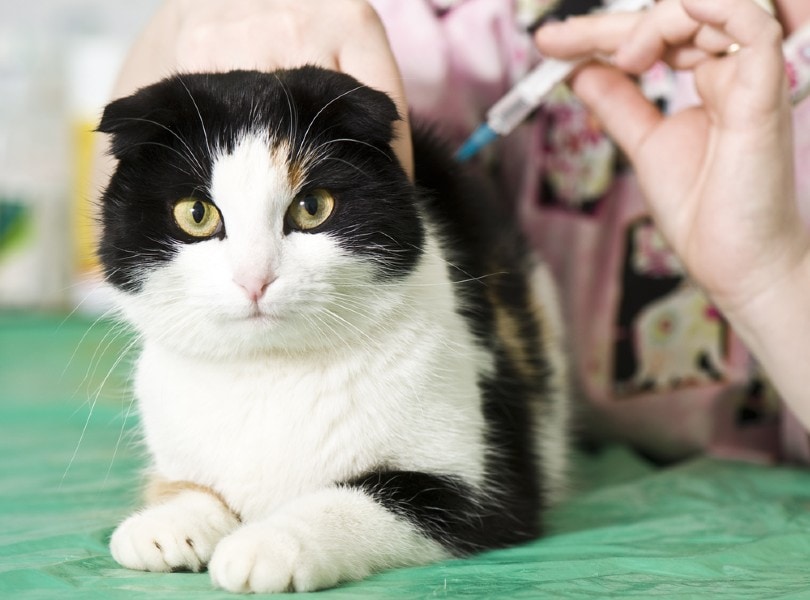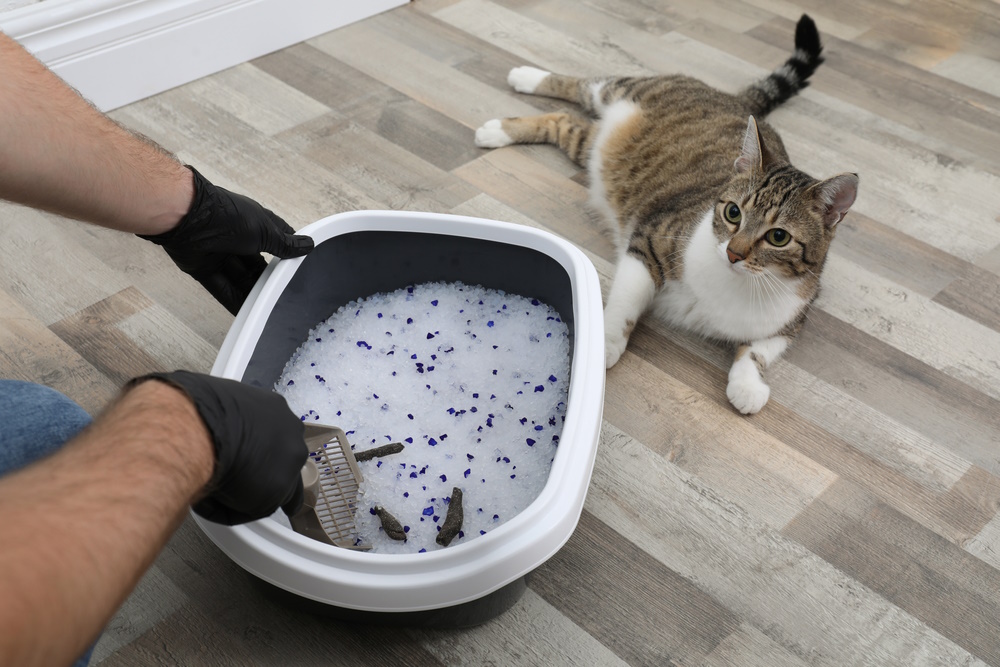Finding worms in your favorite feline’s poop or around their butt is never pleasant. But it is not uncommon for our pets to come down with parasites, such as worms, even if your cat is strictly an indoor pet. But how do cats get worms in the first place? There are a handful of ways for cats to catch worms (and a few worms they can get), and it’s essential to know these so you can reduce the risk of transmission to yourself or other pets in the home.
The most common ways a cat can get worms is by mosquitoes, or by eating infected feces, mice, or fleas. Knowing how to treat worms is vital, so you can get your feline feeling healthy again. In this article, we’ll discuss how your cat can get worms, what signs to look for, and how to treat and prevent them.
The 4 Worm Types in Cats and How They Are Caught
Cats can get a few types of worms, and some are more common than others1.
1. Tapeworms

Tapeworms are common in cats. They’re long and flat with segmented sections and live in a cat’s small intestines. Tapeworms look like grains of rice when you find them in feces or around a cat’s rectum. Taenia taeniaeformis is the most common form of tapeworm and is passed to cats when they eat an infected flea.
2. Heartworms
You give your cat heartworm prevention medicine to protect them, but unlike for dogs, there isn’t an effective cure if they’re infected. Heartworms can be fatal because they cause damage to the lungs and heart.
The good news is that felines are more resistant to worms than canines, but cats can still get them. The heartworm is usually passed to cats by mosquitoes; mosquitoes drink from an infected animal and then carry the heartworm larvae to the next animal they attack.
3. Roundworms

Roundworms are comprised of three species; Toxocara canis is the most common (and the one that can spread to people). However, Toxocara cati is a roundworm species that can be passed to kittens from their mothers via milk. However, most roundworms are acquired by eating feces containing roundworm eggs.
Lungworms are another less common roundworm a cat can get. As the name indicates, they are found in the lungs and lower respiratory tract. They start in the intestines but then make their way to the lungs. They are commonly undiagnosed because some signs of an infection resemble those of a regular respiratory condition.
Eyeworms are less common than other roundworms on this list, and as the name suggests, they affect the eye. The white worms are long but small enough to move across the eye’s surface and hide in tear ducts. They can cloud the cornea and cause watery, itchy eyes. They’re transmitted by flies depositing larvae in the eye.
4. Hookworms
Hookworms are also fairly common in some countries and environments. The most common hookworms in cats are Ancylostoma. The worms burrow into the intestinal lining, causing gastrointestinal issues such as bleeding and weight loss. They are typically caught when cats eat infected feces or animals (like mice). The worms can also be passed to a cat if their skin is penetrated.
Signs of Worms in Cats
If your cat has worms of any kind, they may show signs, but some are easier to spot than others. Signs of lungworm are the most difficult to detect since they resemble several respiratory conditions.
- Worms in feces
- Bloody feces
- Worms around the anus
- Vomiting
- Diarrhea
- Coughing
- Lethargy
- Weight loss
- Loss of appetite
- Anemia
- Pot-belly
- Dull coat
Treatment and Prevention of Worms in Cats
Luckily, worms are treatable in cats, and there are ways you can prevent them from occurring in the first place.
Treatment
As soon as you suspect your cat has worms, take them to the vet for a proper diagnosis. Once the worm has been determined, your vet can prescribe deworming medication that is either injectable or oral.
Giving your cat home remedies for worms is inadvisable since they may be ineffective. Worms that aren’t treated can, in some cases, lead to a fatal outcome.

Prevention
If you need to speak with a vet but can't get to one, head over to PangoVet. It's an online service where you can talk to a vet online and get the personalized advice you need for your pet — all at an affordable price!
Of course, an ounce of prevention is worth a pound of cure, so working to prevent worms from infecting your cat is always preferable!
- Not having more than one cat per litter box
- Regular worm/heartworm treatment
- Deworming treatments for kittens until the age of six months
- Yearly vet visit for a check-up
- Using tick and flea prevention on your pet
- Preventing rodents from infesting your home
Final Thoughts
It’s not fun for anyone when your cat has worms! Now that you know the types of worms your pet can come into contact with and how they come into contact with them in the first place, you should have an easier time preventing your feline friend from getting worms. However, if prevention doesn’t work, your vet can treat your cat with deworming medication. Here’s to happy, healthy kitties!
Featured Image Credit: Jumpstory












